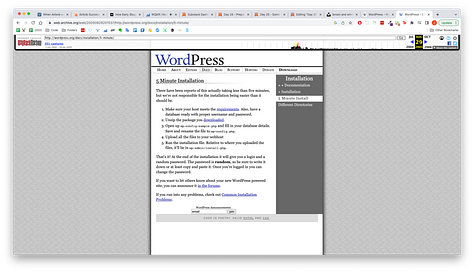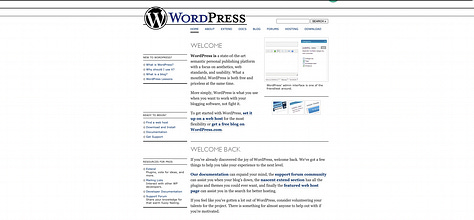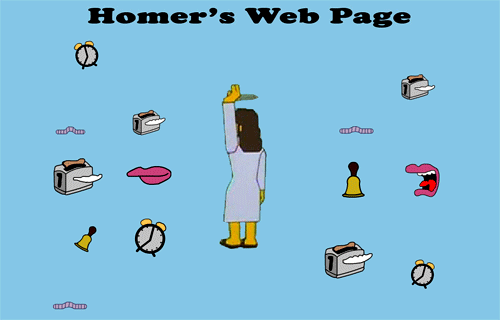Day 26 - Why WordPress and Other Site Builders Haven't Filled the Gap for Small Business
A look into why 23% of independent retailers still don't have a website in 2023
This is part 26 of a 120 day series on validating our product ListIt, a digital storefront for independent retailers to sell their inventory online for free. You can see the whole series here, or read yesterday’s article here.

I remember in 2015 when I first had an idea for a website I wanted to make and asked a friend and former web developer for help. Little did I know then the idea I had was actually a full-fledged web application with authentication that would have taken months for even a professional software developer to make. That’s just the way it goes with people who don’t know code when they have an idea and no exposure to the technical side.
Anyway I remember after several days of back and forth and tutorials on HTML and FTP clients my friend finally suggested I try making a WordPress site. WordPress is pretty slick. From the homepage you get the feeling even you, a non-technical person, could make an amazing website in just a few clicks. Then you install a free template that looks amazing in the previews aaaaand… you get a blog with none of the styling or images of the theme previews.
I also was confused about what the difference between Wordpress.com and Wordpress.org was, and then I didn’t like the theme so I wanted to change back but some themes actually lock you into their system (ahem- looking at you OceanWP) and finally just gave up. I didn’t touch development again for a year and that time just went straight to mobile iOS apps with Swift.



The truth is the web is the hardest platform to build for of anything out there. It’s an open system with APIs and different machines talking to each other. Writing and styling a document are two separate languages- HTML and CSS (okay, HTML is a markup language you nerd). Then to create any interaction on the page you need to know Javascript, and to serve it from a server you need to know a backend language like PHP or Node. Four languages! Just to print “Hello world” on a white screen you need a domain, a server or hosting provider, a code editor, maybe an FTP client, an SSL certificate. It took me years to learn what any of that stuff was.
This is why web development is an actual hell for independent retailers. As we’ve discussed before retail owners and managers typically work 50 to 60 hours a week and the average store owner is in their 40s. They’re not then going to learn PHP on top of that.
I’m sure when it launched in 2003 WordPress was the bees’ knees for bloggers fed up with hand-coding their own sites in Comic Sans MS, but for someone who’s never seen computer code before it might as well have been impossible. Even today as an experienced web developer I get a small heart palpitation when a client says they want to use WP, since it’s a totally separate and in many ways equally complex method of website making.

New site builders have come online in recent years. Now there’s Wix, Weebly, Webflow, to name a few. Shopify gives you the tools to make your own website and pay them $35 per month for the honor. All of these tools though who’ve promised to take the pain out of web development also bring their own systems with their own way of doing things and almost always a fairly steep learning curve if you want to do anything custom, which is why despite the supposed simplicity there’s such a thing as a WordPress developer, and a WebFlow developer, and a Shopify developer.
All of this is also part of why nearly a quarter of independent retailers in the US today still - in 2023! - don’t have a website. According to a poll by Digital.com 23% of retailers don’t have a website. The reasons cited range from simply not feeling the need for one to thinking social media like Instagram is all they need, a falsehood we’ve tackled before on this blog. Three of the top reasons mentioned though, predictably, have to do with not knowing how, not having the staff or the time or the money to do it. Indeed it is the case that the average website takes weeks to make and costs thousands of dollars to develop.
So an important question for web developers - yes developers, I’m calling you out. An important question for you is why is it that retailers understand and are comfortable with social media but have no idea how to create a site for their business?
The answer is that websites, even with builders such as Shopify and Wordpress, are still too damn hard to learn, use, and maintain. The solution therefore, is to create a way for businesses to create an online presence as easily as they create a social media page. No WYSIWYG, no PHP extensions, no installation, no updating, no hosting, no computers at all.
We’ll reveal more about how ListIt is solving this problem with a brand new prototype UI in tomorrow’s post!
ListIt is a free app that allows retailers to sell to local shoppers as easily as posting to Instagram. Like it? Dislike it? Simply have questions? Reach out to me directly at james@listit.one and be sure to check out our website ListIt.one for updates and the beta product sign-up- coming this weekend!


